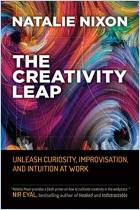Robert Lowe provides a hands-on guide to using the techniques of improvisational theater to increase spontaneity and creativity in the workplace. He shows how to apply these improv techniques to improve communication, break down bureaucracy and help people in your organization express their talents. Happily, his tips have broad application beyond the workplace. The material is relevant to individuals, families, community leaders, politicians, military leaders, business leaders, teachers, and anyone who understands the importance of communicating effectively and easily. Here’s why the show must go on.
Improvisation – that is, the techniques of improvisational theater, or improv – can improve your business environment.
Improvisation uses the activities of theatrical improv to improve your business environment. You can use these techniques as an exercise, training event or organizational development tool. They can improve creativity, add to your presentations, help develop spontaneity and increase communication skills. These techniques are useful in training and in promoting learning. They can help you resolve conflicts, solve problems, engage in strategic planning, build teams and reduce stress.
While people often use the words “improvisation,” “improv” and “the improv” interchangeably, they are different:
- Improvisation – or improv for short – uses techniques to generate creativity, communicating, learning, growing, exploring and to teach people “to think quickly and with delight.”
- The Improv is the franchise name of a chain of US-based stand-up comedy clubs. However, stand-up and improv are not synonymous.
- Impro is the special state of consciousness which is active when a person or group is “engaged at the highest levels of possibility...
Robert Lowe is the founder of Improvisation, Inc., an educational consulting firm specializing in the use of improvisational theater techniques for organizational development. Lowe is a passionate drama teacher, director, player and observer.






























Comment on this summary or Start Discussion